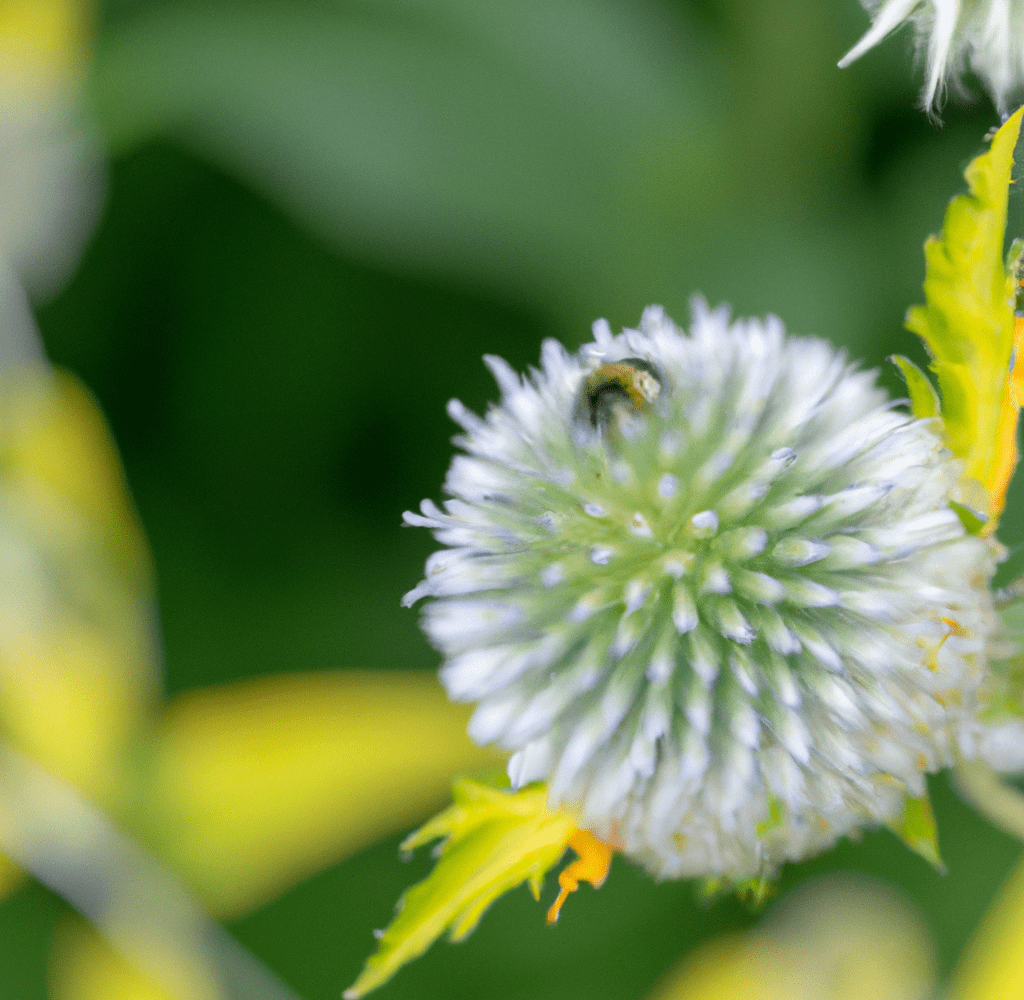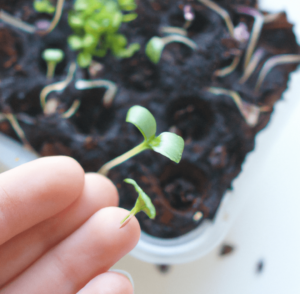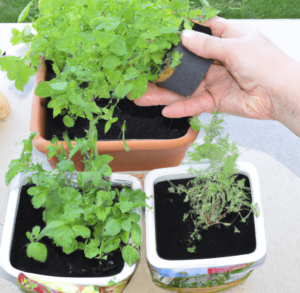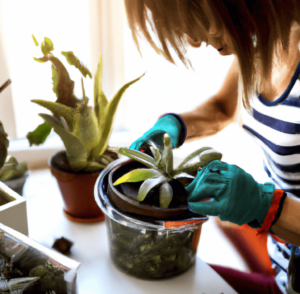By pollinating plants, removing pests, and providing food for other helpful species, beneficial insects are essential for sustaining a healthy garden environment. You can enjoy a growing and varied outdoor environment without the use of dangerous chemicals by learning how to attract beneficial insects to your garden.
Understanding Beneficial Insects
The ecosystem of the garden depends heavily on beneficial insects because they pollinate plants, keep pests under control, and provide food for other animals which is why you should learn how to attract beneficial insects to your garden.

Identification and Characteristics of Common Beneficial Insects
The first step in learning how to attract beneficial insects to your garden is by learning about the most common ones:
- The most well-known benevolent insect is the honeybee, which pollinates a large number of the plants in our gardens and orchards. They consume floral nectar and are easily identified by their fuzzy bodies and distinctive buzzing sound.
- Ladybugs, commonly referred to as lady beetles, are crucial predators in the garden because they consume aphids and other undesirable insects. They are tiny, spherical insects with recognizable red or orange, or black patterns on their bodies.
- Aphids, mites, and other soft-bodied insects are among the food sources for lacewings, another significant predator in the garden. They are distinguished by their thin, green, or brown bodies and delicate, lacy wings.
- Another beneficial insect is the parasitic wasp, which reduces pest populations by laying its eggs on or within pests like caterpillars and aphids. These wasps are tiny, thin insects with long, slender legs and a narrow waist.
The Roles Beneficial Insects Play in the Garden Ecosystem
Learning how to attract beneficial insects to your garden is important because they’re crucial for maintaining a healthy and varied outdoor environment as they serve numerous important roles in gardening.
- Pollination, which is the transport of pollen from the male to the female sections of a flower to enable plants to generate seeds and fruit, is one of the main functions of helpful insects. As they consume nectar and gather pollen to bring back to their hives, honeybees, bumblebees, and other insects are crucial pollinators.
- The management of garden pests like aphids and caterpillars is another function of helpful insects. The most crucial predators in the garden are parasitic wasps, lacewings, and ladybugs because they keep populations of dangerous insects in check.
- Helpful insects provide food for other garden ecosystem inhabitants like birds and spiders. As a result, they play a crucial role in the food chain and aid in preserving the harmony of life in the garden.
Creating Habitat for Beneficial Insects
An important step in learning how to attract beneficial insects to your garden whether you’re growing plants in containers or a flower bed around the lawn: creating the best habitat for them.
Tips for Providing Food, Water, and Shelter for Beneficial Insects
Here are our tips for providing water, food, and shelter as you learn how to attract beneficial insects to your garden:
- Offer Nectar Sources: Flowers with plenty of nectar can draw bees and butterflies, as well as other useful insects. To offer a continuous source of food, think about planting a range of native flowers that bloom at various times over the course of the growing season.
- Available Water: Water should be available since beneficial insects need it to survive, particularly during dry spells. Make a shallow dish or basin with water and pebbles so that insects can land on it and drink from it. To maintain the source of the water safe for insects, avoid using pesticides there.
- Provide Shelter: Many helpful insects lay their eggs on leaves and stems, including ladybugs and lacewings. You can support their survival by providing ideal habitats, such as brush piles, tall grasses, and plants.
- Encourage Predator Insects: Predator insects, such as lacewings and assassin bugs eat garden pests and assist in maintaining a balanced environment in your garden. By growing a variety of plants and using fewer pesticides, you can promote their presence.
Draw them in to help out your garden as well as protect it.
How to Create a Diverse Environment That Supports a Variety of Beneficial Insects
As you learn how to attract beneficial insects to your garden, you need to create a varied environment by:
- Supplying a diversity of insects with habitats and food sources, plant a variety of flowers, shrubs, and trees. Additionally, a more appealing and lively garden will result from this.
- Including seasonal blooming plants to guarantee that insects have access to food throughout the whole growing season. Tomatoes, which are popular with many beneficial insects, may be planted with other flowering plants.
- Supporting predatory insects like parasitic wasps, ladybugs, and lacewings, eat pests and assist in controlling them. By growing flowers that are high in nectar, providing cover, and utilizing fewer insecticides, you can encourage these insects.
- Providing water for these insects to survive. For a dependable source of water for them, construct tiny pools or set up a drip system.
Plant Selection
You can learn how to attract beneficial insects to your garden by choosing the right plants.
List of Plants That Are Known to Attract Beneficial Insects
The following plants are known to draw beneficial insects:
- Flowers: Nectar-rich flowers, such as zinnias, asters, and daisies, can draw pollinators like bees and butterflies.
- Herbs: Plants with pest-eating predatory insects, such as ladybugs and lacewings, can be attracted by herbs like dill, fennel, and parsley.
- Vegetables: Some vegetables, like tomatoes, can serve as a breeding ground for helpful insects that feed on pests. For instance, the braconid wasp, a helpful predator, frequently preys on tomato fruit worms.
- Trees and shrubs: Trees and shrubs like birches and willows can act as homes for beneficial insects.
- Native plants: Native plants are frequently the most effective at luring the advantageous local insects. Think about combining local shrubs, flowers, and herbs into your garden design.
Not only will your garden be as vibrant and varied as those in gardening guides, but its helpful insect population will be too!

How to Create a Varied and Blooming Garden That Support the Lifecycle of Beneficial Insects
To properly learn how to attract beneficial insects to your garden and create a varied space for them to thrive, follow these steps:
- Plan for Seasonal Bloom: Throughout the growing season, beneficial insects need a consistent source of food and cover. You can make sure that there is always nectar available and that beneficial insects have a place to live by including plants that bloom at various times.
- Use a Variety of Plants: A variety of plants, such as flowers, herbs, shrubs, and trees, can offer a variety of food sources and habitats for beneficial insects. Consider establishing local species that are adapted to your area’s climate.
- Make Water Sources Easily Available: Water sources should be made available since beneficial insects, particularly during dry seasons, need water to survive. Make a shallow dish or basin with stones and water in it so that insects can drink from it. To maintain the source of the water safe for insects, avoid using pesticides there.
- Provide Habitats and Shelter: Many beneficial insects, including ladybugs and lacewings, lay their eggs on leaves and stems. You can support their survival by providing ideal habitats, such as brush piles, tall grasses, and plants.
- Encourage Predator Insects: Predator insects, such as lacewings and assassin bugs eat garden pests and assist in maintaining a balanced environment in your garden. By growing a variety of plants and using fewer pesticides, you can promote their presence.
Avoiding Pesticides
Yes, you can learn how to attract beneficial insects all you want but all that hard work goes down the drain if you’re using pesticides all the time.
Beneficial insects depend on nectar and other plant-based food sources to survive, but pesticides can contaminate these supplies and kill the insects that feed on them. Through contact or ingestion, pesticides can potentially cause direct harm to beneficial insects.
Furthermore, female beneficial insects like ladybugs may lay their eggs on or close to polluted plants, endangering the next generation before they even hatch. The population of these significant insects may decrease as a result, which may upset the ecosystem’s equilibrium and cause additional issues.
These insects rely on nectar and flora for nourishment, and when pesticides are used, they may be exposed to dangerous substances. By using fewer pesticides, gardeners may foster an ecology that supports beneficial insects and fosters a healthy, balanced ecosystem.
Tips for Using Least-Toxic Alternatives to Pesticides
Now that you know how to attract beneficial insects to your garden, here’s what to do if you need to use pesticides:
- Encourage Natural Predators: In your garden, encourage the presence of birds, bats, and other natural predators. Without the use of pesticides, these animals can aid in the control of insect pests.
- Preserve a diverse ecosystem: You may offer a wide range of food supplies for beneficial insects, including nectar and locations for egg-laying, by growing a variety of flowers, shrubs, and trees.
- Utilize physical obstacles: Row covers and screens are examples of physical barriers that help keep insect pests away from your plants. When beneficial insects, such as pollinators, are present, these barriers can be taken down.
- Implement Cultural Practices: Using beneficial cultural practices in your garden, such as rotating crops, preserving the quality of your soil, and getting rid of damaged plants, will help cut down on the number of bug pests there are.
- Use Low-Toxic Pesticides: If pesticides are required, seek out low-toxic alternatives including soaps, oils, and natural insecticides. When using insecticides, pay close attention to label directions and stay away from areas where beneficial insects are present.
Bottom Line: How to Attract Beneficial Insects to Your Garden
By pollinating plants, consuming insect pests, and other activities, beneficial insects contribute significantly to the maintenance of a healthy garden ecosystem which is why we recommend learning how to attract beneficial insects to your garden.
Planting a variety of flowers, shrubs, and trees that supply nectar and other food sources, encouraging natural predators, putting up physical barriers, and adopting cultural norms that discourage insect pests are some important strategies to draw beneficial insects to your garden. Experiment with these methods and learn more about the function of beneficial insects in the ecosystem of the garden!
How to Attract Beneficial Insects to Your Garden FAQs
Why is a healthy garden environment dependent on beneficial insects?
Helpful insects are crucial for pollinating plants, eliminating pests, and supplying food for other beneficial species which supports a robust garden ecosystem.
How can I entice helpful insects to visit my garden?
By providing a conducive environment for their survival and reproduction, including food and shelter, you can entice beneficial insects to your garden. This can be done by cultivating nectar-rich plants, a water source, and habitats like compost piles, limiting or avoiding the use of insecticides, and establishing nectar-rich plants.
What function do helpful insects provide in the garden ecosystem?
Beneficial insects are crucial to the garden ecology in a number of ways, including pollination, controlling pests, and feeding other animals which are we wanted to teach you how to attract beneficial insects to your garden.
What common helpful insects are present in gardens?
Ladybugs, honeybees, lacewings, and parasitic wasps are the most frequently encountered beneficial insects in gardens.
How can I make my garden a habitat for helpful insects?
As you learned in how to attract beneficial insects to your garden you can provide food, housing, and a place to lay eggs in order to make an ideal environment for them. Planting nectar-rich flowers, providing habitats for predatory insects, and being aware of the specific needs of certain beneficial insects are all ways to do this.
What factors should be taken into account while selecting plants for the garden to draw beneficial insects?
When selecting plants for your garden, think about how different plants can encourage beneficial insects. Some plants attract predators which are outlined in how to control pests in your garden naturally.
What plants have a reputation for attracting helpful insects?
Pollinators like bees and butterflies can be attracted by nectar-rich flowers like zinnias, asters, and daisies. Pest-eating insects like ladybugs and lacewings can be attracted by herbs like dill, fennel, and parsley.
Tomatoes are one example of a vegetable that might act as a breeding ground for pest-eating insects. Also, beneficial insects can live in trees and plants like birches and willows. In general, native plants are typically the best at luring regionally advantageous insects.
How may pesticides endanger helpful insects?
Because beneficial insects rely on nectar and other plant-based food sources to survive, pesticides can contaminate these sources and kill the insects that eat them. As a result, pesticides can affect helpful insects. Through contact or ingestion, pesticides can also directly injure beneficial insects, and female insects may deposit their eggs on or very near polluted plants, jeopardizing the following generation.
What are some recommendations for utilizing less hazardous pesticide substitutes?
As non-toxic alternatives to pesticides, physical barriers, natural predators, and other insect pest management techniques can be used. When using pesticides, it’s important to use them sparingly, only when necessary, and to choose non-toxic alternatives in order to protect the well-being of beneficial insects and sustain a balanced garden ecology.







